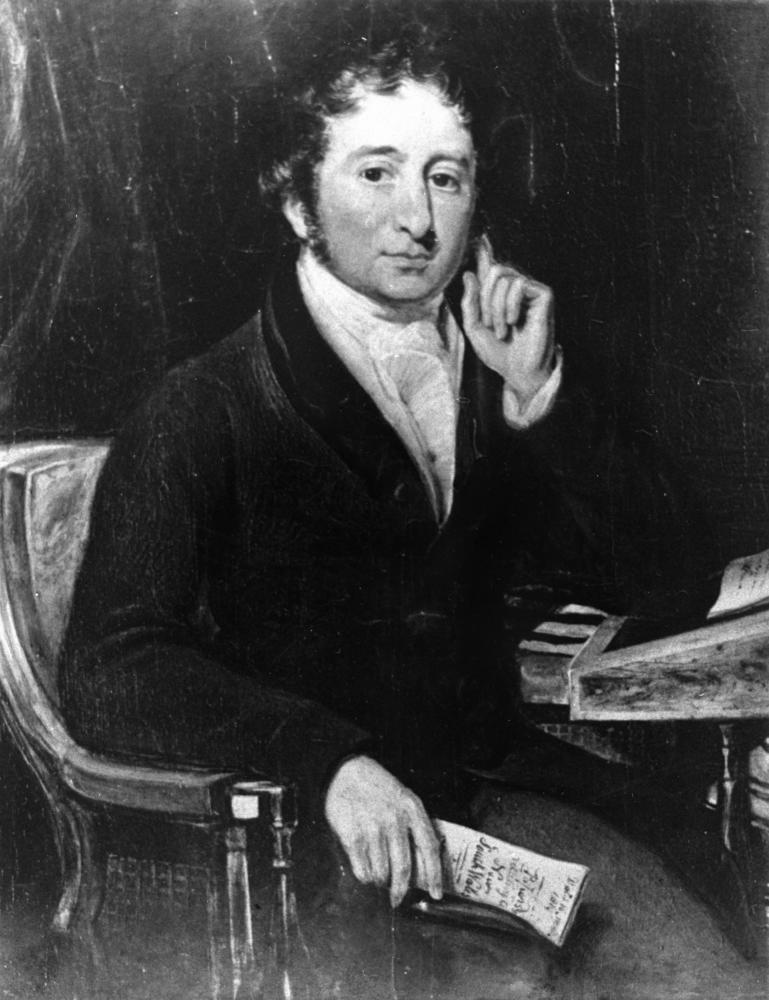- John Bigge
Infobox Person
name = John Thomas Bigge

caption =Portrait of John Thomas Bigge
birth_date =8 March 1780
birth_place =Northumberland, England
death_date =22 December 1843
death_place =Grosvenor Hotel, London, England
death_cause =accidental death
residence =
other_names =
occupation =Judge and royal commissioner
spouse =
partner =
children =
parents =Thomas Charles Bigge
|John Thomas Bigge (
8 March 1780 –22 December 1843 ) was an English judge and royal commissioner.Bigge was born at Benton House,
Northumberland ,England ,cite web |url=http://www.adb.online.anu.edu.au/biogs/A010093b.htm |title='Bigge, John Thomas (1780 - 1843) |accessdate=2008-02-12 |author=J. M. Bennett |work=Australian Dictionary of Biography , Volume 1 |publisher=MUP |year=1966 |pages=pp 99-100] the second son ofThomas Charles Bigge ,High Sheriff of Northumberland in 1771. He was educated at Newcastle Grammar School,Westminster School (1795) and in 1797 enteredChrist Church, Oxford (B.A., 1801; M.A., 1804). Bigge was called to the Bar in 1806 and from 1814–1818 he was chief justice of the former Spanish colony of Trinidad.The Bigge Inquiry
Since 1817, Lord Bathurst had wanted to examine whether transportation was an effective deterrent to crime. The commissioner may also have been appointed in response to complaints to London from leaders of the community of free settlers including John Macarthur.
On
5 January 1819 , Bigge was appointed a special commissioner to examine the government of the Colony ofNew South Wales by Lord Bathurst, theSecretary of State for War and the Colonies . His brief was to determine how far the expanding colony of New South Wales could be “made adequate to the Objects of its original Institution”, which were understood to be purely to be a penal colony. He was to come toAustralia to investigate all aspects of the colonial government, then under the governorship ofLachlan Macquarie , including finances, the church and the judiciary, and the convict system.Together with his secretary
Thomas Hobbes Scott , Bigge arrived inSydney on26 September 1819 , per the ship, "John Barry". Bigge finished gathering evidence February 1821 and on 10 February, sailed back to England aboard the ship, "Dromedary".cite web | last = | first = | author=Percival Serle |year = 1949 | url = http://gutenberg.net.au/dictbiog/0-dict-biogBe-Bo.html#bigge1 | title = BIGGE, JOHN THOMAS (1780-1843) | work = Dictionary of Australian Biography | publisher = Angus & Robertson | accessdate = 2009-02-12]While Bigge was in Australia, there was noticeable friction between himself and Governor Macquarie and he spent much time in the company of the Macarthur's.
Bigge’s first report was published in June 1822 and his second and third reports in 1823. Elements of Bigge’s reports criticised Governor Macquarie’s administration including his
emancipist policy, expenditure on public works and management ofconvict s. Macquarie answered criticisms to the secretary of state, Lord Bathurst in 1822. Bigge's reports are now viewed as not showing sufficient detachment and although there were many excellent recommendations, there were also trifling recommendations and hyper-critical detail.In 1823, many of Bigge’s recommendations from his second report were incorporated into the NSW Judicature Act which legislated to provide for the colony’s government and judicial system. It also provided for a separate administration for
Van Diemen's Land (Tasmania).The third report was the most impartial and least contentious. It afforded a generally clear picture of farming and grazing in the Sydney district and west of the Blue Mountains. It did not sufficiently acknowledge the important developments of the Illawarra district and tended to suggest falsely that agriculture was drooping under Macquarie. Otherwise it was well presented and included useful accounts of the state of revenue, trade and the country's economic position.
In 1824, Governor Brisbane approved the sale of
crown land in accordance with one of Bigge’s recommendations. Previously only a nominal ‘quit’ rent was required for grants by the crown.The establishment of the limits of location resulted from Bigge's recommendations.
From 1823, Bigge was given a similar appointment to examine the government of the Cape Colony, Mauritius and Ceylon.
Death
The arduousness of travel and climate told heavily on Bigge after he suffered a leg injury in falling from his horse at the Cape, for which, it is reported, he was treated by a doctor who turned out to be not only a quack but a woman posing as a man. In 1829 he had returned to England for the last time. He continued in poor health and was too indisposed to accept a position to report on clerical establishments in 1832. He never married and lived a solitary life in retirement until his accidental death on
22 December 1843 at the Grosvenor Hotel in London. He was buried as directed by his will 'without ceremony or superfluous expense'.External links
* [http://www.records.nsw.gov.au/indexes/colsec/b/f04c_be-bi-15.htm#BIGGE State Records of New South Wales; index of items held relating to John Bigge] (and also following page [http://www.records.nsw.gov.au/indexes/colsec/b/F04c_be-bi-16.htm#TopOfPage] )
References
Wikimedia Foundation. 2010.
